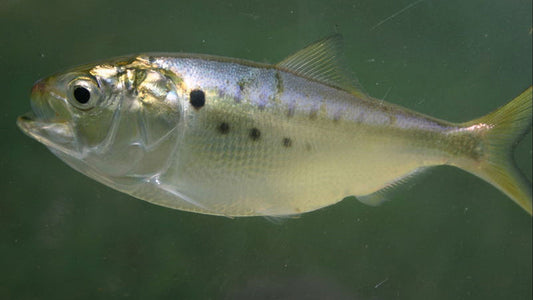
Do You Use A Floating Line For Striped Bass?
Share
This is a question that I have been getting a lot recently! Many anglers are coming into the shop, looking at new lines, and asking about different tactics for striped bass. During the conversations, I will usually be asked how/when to use a floating line for stripers. Or, when/how to use poppers and other top-water flies. With all the different lines available from full floating to full sinking, there's a lot of variation which intern creates a lot of confusion. To break it down, I will make a short pros/cons list instead of trying to dissect all the nuances. Hopefully these can help when figuring out which line is best for you, and your situation...
The pros + cons of using a floating line for striped bass:
PROS
- A floating line will allow you to effectively fish top-water/poppers. It will give you the ability to vary your retrieve and not worry about your fly slowing sinking into the water column (like an intermediate line will).
- During a feeding "blitz" a floating line will keep your fly in the "strike zone" either with a top-water or any general baitfish pattern. During this time, that's where the fish are looking and that's where your fly will be.
- Night fishing - a general rule of thumb is: "fish are looking up at night." Now this isn't 100% the case all the time, but it certainly is a "rule" that is proven true over and over. So with a floating line, taking advantage of a fish's habitual periphery at night, throwing a floating line can be very enticing.
- Skinny water - if you fish from a boat in very shallow water (think flats boat), then a floating line is probably in your arsenal. If you are doing this, then you are most likely sight-fishing and a floating line will allow you to present the fly delicately and also not constantly bump the bottom during your retrieval. Plus with a 7-9ft leader, this is all you will need to touch bottom if necessary.

CONS
- Limits your strike zone - unless you are throwing a very heavy crab/clouser/etc on a 20-30ft leader (I'm guessing you aren't), you are pretty limited in terms of where your fly will swim while using a floating line. Where even with just an intermediate, you can either start your retrieval immediately, or wait a little while after casting to adjust depth.
- Schoolies - schoolies are fun, but not when you know the bigger fish are directly under the schoolies! As mentioned in the "pros" - a floating line will put your fly where the fish are during a "blitz." Most times during these blitzes the schoolies beat the bigger fish to the fly. Unless you are seeing big tails on the surface, there's a good chance that the bigger fish are under the bait and schoolies. So, throwing a sink-tip or even intermediate line will help cut through the bait and schoolies to the larger fish underneath (being smart and letting the food come to them!)
- Waves and current - I do a fare amount of striped bass fishing in the surf, off rocks, and heavier tidal/moving water areas. When casting a floating line into decent surf and chop, it is increasingly difficult to "swim" the fly properly. One of the skills that separates, in my opinion, a good streamer/baitfish fly fisherman from the best, is his/her ability to swim a fly properly through waves/current/moving water. If you are casting a fly into the surf and your pattern is being ripped through the tops of waves, getting manhandled by current, and is simply not "acting like a real (bait) fish" then most likely a striper will see the same thing and ignore your offering. Using an intermediate/sinking line will cut through waves/chop and tidal current a lot better and further allow you to "swim"/retrieve your fly in a much more natural manner.
- Wind - It's never going away and us striper anglers are almost always dealing with it! One thing, in terms of casting, that a floating line will not do as well as an INT/sinking line will, is deal with the wind. A floating line (usually) has a thicker head (buoyancy) and is lighter. Specifically the thicker head does not cut through wind as well as the thinner sinking (tip) lines do. You will find very quickly that a floating line simply does not deal with wind like the INT/sinking lines.
For the most part, what line and when is a very circumstantial decision, especially a floating line for stripers. The right line is also very personal. So next time you are grabbing your gear to head out on the salt, I hope these quick pros/cons help you make a good decision on what line is best for you! Good luck!



2 comments
This is a good questions in regards to setting the hook. Are you using barbed or barbless hooks?
I wouldn’t suggest setting the hook “harder” if you are already strip-setting the hook currently. But, I would certainly make sure you are not raising the rod too quickly after the take! An important thing to also remember is that you need to keep strong pressure on the fish and keep that line tight after you have the fish on. Stripers are well known for spitting the hook (not as notorious as tarpon) but they are hard(er) mouths and a hook can easily come loose.
Please let me know if you have any other questions!
- Josh
I seem to lose fish 30-40 seconds after strike.Should I set hook with more force? I live PA,so info. Is hard to come by! Regards,D.